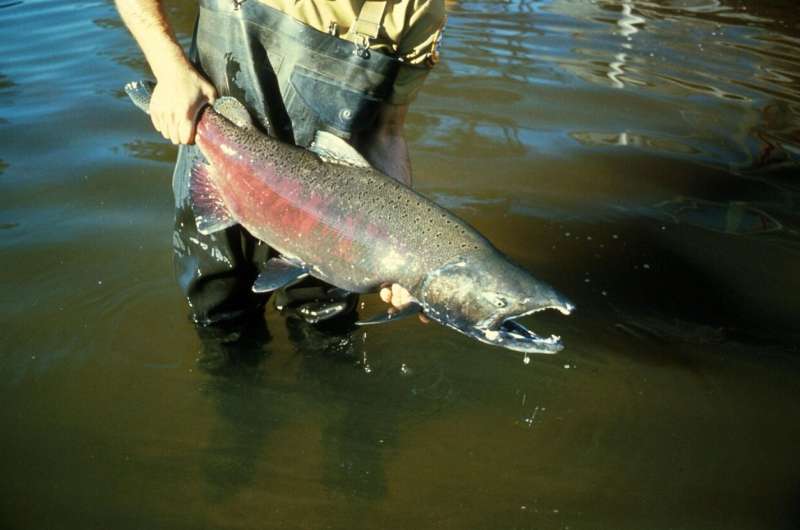Researchers from UConn and partner institutions have conducted a comprehensive study on the transport of nutrients and contaminants by Pacific salmon over a 40-year period. The findings shed light on the intricate interplay between the positive and negative impacts of these iconic fish as they migrate from the ocean to their freshwater spawning grounds. The study provides valuable insights into the complex role of migratory species in ecosystem dynamics and their significance for both human and environmental well-being. Pacific salmon are a vital part of the ecosystem along the North American coast.

Unveiling the Delicate Balance of Salmon-Borne Nutrients and Contaminants
Each year, millions of Pacific salmon undertake a remarkable journey from the ocean to their freshwater spawning grounds, profoundly shaping the ecosystems they encounter along the way. This migration is a critical process that transports both beneficial nutrients and potentially harmful contaminants, creating a complex web of ecological interactions.
The research team combined estimates of migrating fish biomass for the 40 years between 1976 and 2015 with data on Pacific salmon nutrient and contaminant concentrations. Their findings revealed that on average, there were an estimated 119 million Pacific salmon returning to North America each year during the study period, transporting thousands of tons of nutrients and kilograms of contaminants. These fluxes of nutrients by Pacific salmon are among the largest that have been estimated for any group of migratory animals.
Tracking the Evolving Pacific Salmon Community and Its Impact on Nutrient and Contaminant Transport
The researchers also investigated how changes in the Pacific salmon community over time have impacted nutrient and contaminant transport. They found that the Pacific salmon community grew substantially over the 40-year period, both in terms of biomass and number of fish. Notably, the estimated amount of nutrients and contaminants transported in 2015 was 30% higher than in 1976, with the increase in pink salmon biomass accounting for nearly 80% of this observed increase.
The researchers also explored the differences in contaminant levels among the various Pacific salmon species. They found that higher trophic level fish, such as Chinook salmon, tend to carry higher ratios of contaminants to nutrients, while lower trophic level species like pink salmon transport more nutrients per contaminant. However, due to their sheer numbers, pink salmon ultimately contributed the greatest share of contaminants transported to North America.
Balancing the Tradeoffs: Navigating the Nutritional and Contaminant Implications of Salmon Consumption
The researchers also considered the tradeoffs between the nutritional benefits and contaminant risks associated with consuming Pacific salmon. By comparing the health benefits of the omega-3 fatty acids in salmon with the potential risks posed by the included contaminants, the team found that overall, salmon consumption brings a net benefit to both people and the ecosystem.
“We miss part of the story when we study nutrients and contaminants separately,” says Jess Brandt, the lead researcher. “We hope this study leads to future work focused on migratory species as transporters of nutrients and contaminants and the tradeoffs between the two types of inputs for recipient systems at large spatial scales.” Understanding the intricate balance between the bright and dark sides of salmon biotransport is crucial for informing sustainable management practices and ensuring the long-term health of these vital ecosystems.
